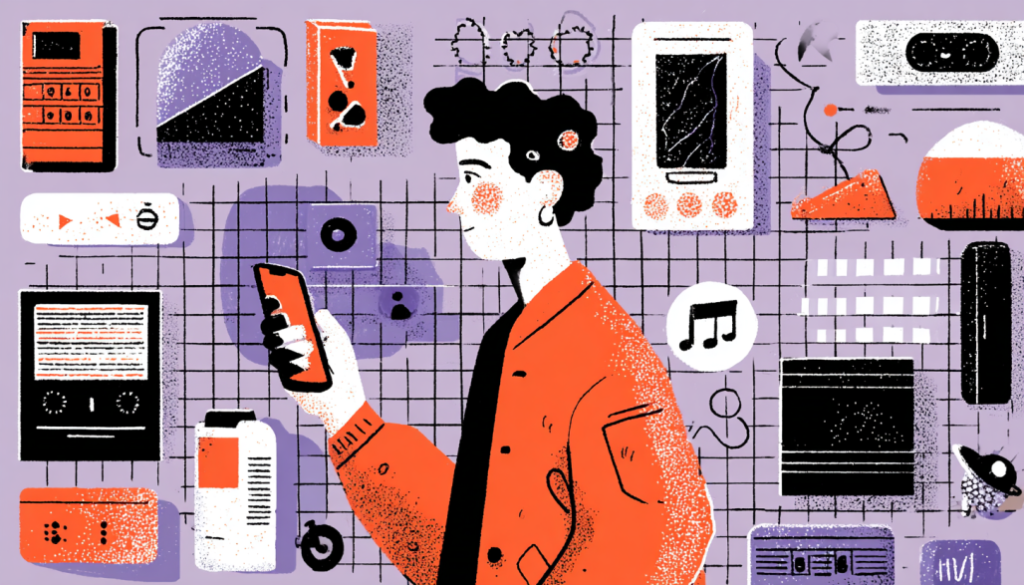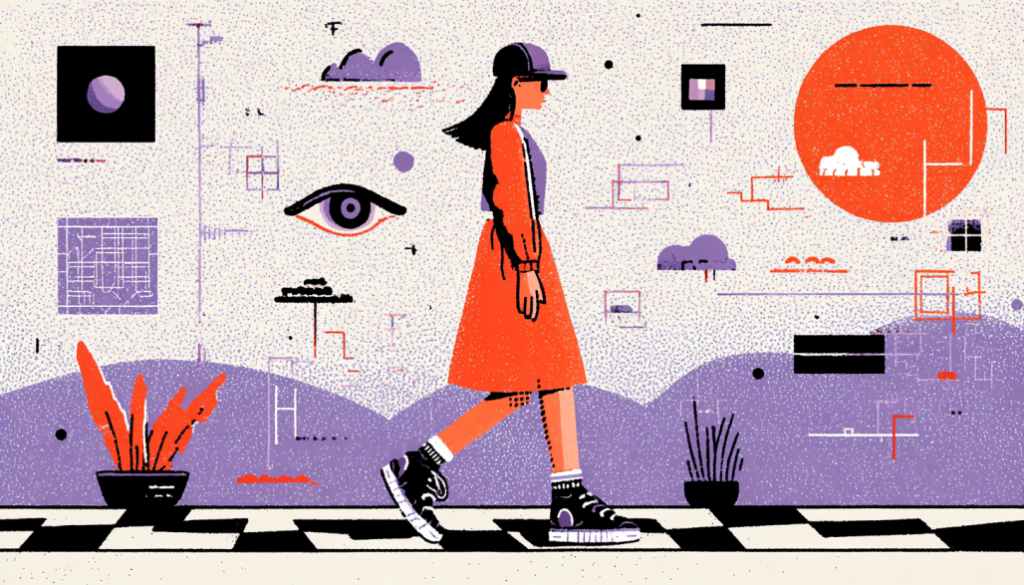Imagine opening an app at night, and instead of blinding you with harsh light, it greets you with a soft, warm interface that feels like candlelight. Or picture checking a travel app while waiting at the airport, and the entire interface reorganizes itself to show flight status, nearby lounges, and gate changes without you lifting a finger.
This isn’t just personalization—it’s ambient personalization, where digital products become context-aware companions that respond to your time, place, and even your mood.
In this article, we’ll break down what ambient personalization really means, why it matters for senior UX designers, and how to apply it effectively. We’ll also explore real-world case studies and outline the design playbook for creating adaptive interfaces that feel alive, responsive, and deeply human.

The Shift Toward Ambient Personalization
Why Context Is the New Frontier of UX
Personalization used to mean adding someone’s first name in an email subject line. That was cute in 2008. Today, personalization means something entirely different. Users expect interfaces that adapt to their context—where they are, what time it is, and how they feel.
This area is the domain of context-aware computing, where devices aren’t just static screens but living, breathing systems that gather signals from their environment. GPS data, ambient light sensors, time of day, and even biometric cues—these inputs allow interfaces to adjust dynamically.
Think of Spotify’s “Daylist” playlists. They don’t just give you random songs; they adapt to your energy levels throughout the day, creating a sense that the app “gets” you. That’s not magic. It’s a carefully orchestrated design supported by real-time context signals.
So why does this matter for UX? Because relevance reduces friction. An adaptive system removes unnecessary steps by anticipating user needs. Instead of forcing someone to dig through menus, you surface what matters in that moment.
From Static to Fluid Interfaces
Traditionally, interfaces were designed as static canvases. The screen layout was the same no matter when or where you opened it. But life isn’t static. People interact with digital products in cars, on trains, during work, at home, and everywhere in between.
Ambient personalization acknowledges this fluidity. Interfaces become flexible organisms that bend and stretch around a user’s shifting context.

Key Elements of Ambient Personalization
Breaking Down the Core Elements
To design for ambient personalization, you need to combine three core building blocks.
1. Context-Aware Computing: Reading the Room (and the User)
At the heart of ambient personalization lies data. However, it’s crucial to select the appropriate data for ambient personalization. Context-aware computing pulls in environmental signals:
- Location data: Where is the user? Are they stationary, commuting, or traveling abroad?
- Time-based signals: Is it morning, afternoon, or midnight?
- Environmental cues: Is it sunny outside or pouring rain?
- Biometric data: What’s the user’s stress level, heart rate, or activity state?
- Device context: Are they on mobile, desktop, or smartwatch?
The design challenge is using these signals without overwhelming the user or creeping them out.
For instance, Google Maps provides more than just directions. If it senses you’re walking at night, it subtly shifts its colors to be darker, calming your eyes while maintaining visibility. That’s context-aware computing at work.
2. Dynamic Color Schemes That Respond to Time and Mood
Humans are highly sensitive to color. It’s not just aesthetic—it shapes our emotions. Adaptive color schemes can help apps reflect the user’s environment.
- Morning interfaces could use brighter hues to energize.
- Nighttime screens could adopt muted palettes to ease strain.
- Weather-driven palettes could add contrast on gloomy days and lift mood.
Think of Apple’s system-wide “Night Shift” mode. It’s not revolutionary in concept, but it sets a precedent: digital systems can change their skin to suit human rhythms. The next step? The next step involves incorporating environmental data, such as utilizing blue tones on cloudy days to enhance mood.
3. Adaptive Interfaces That Reshape Around Behaviors
Content and layout shouldn’t be static. Adaptive interfaces reorganize themselves depending on the user’s situation.
- A fitness app might switch from “workout mode” to “recovery mode” automatically.
- A banking app could highlight the nearest ATMs when it detects you’re traveling abroad.
- A calendar app might shift its home screen to focus on travel times during commutes.
The goal isn’t novelty. It’s fluid usability. The interface should feel alive, not rigid—a companion that evolves with the user’s needs in real time.

Real-World Case Studies in Ambient Personalization
When Ambient Personalization Elevates the Experience
Airline Apps: Stress-Free Travel Experiences
Delta’s mobile app automatically surfaces your boarding pass when you approach the airport. It doesn’t wait for you to dig into menus. The experience feels intuitive, almost anticipatory, reducing stress during a hectic moment.
Smart Homes: Lighting as an Interface
Philips Hue lighting adjusts based on time and activity, shifting from energizing whites in the morning to warm ambers at night. While not a digital “interface” in the strict sense, it demonstrates how adaptive design can create emotional alignment between environment and user.
Meditation Apps: Calm Adjusts to Circadian Rhythm
Calm, the meditation app, changes its home screen recommendations depending on the time of day. Morning prompts are energizing, while nighttime prompts are designed for winding down. The outcome is personalization that feels ambient, not forced.
Automotive Dashboards: Tesla’s Adaptive UI
Tesla’s dashboard adapts its UI to driving conditions. At night, screens dim automatically. During rain, controls for wipers and defogging become more prominent. The interface doesn’t just display—it reacts.
Streaming Platforms: Netflix Thumbnails as Micro-Personalization
Netflix has started experimenting with adaptive thumbnails. Instead of showing the same cover image for every user, it adapts to highlight genres or themes the viewer enjoys. It’s subtle but creates a deeper sense of relevance.
What these examples teach us is simple: ambient personalization thrives where context meets immediacy. The user feels like the system “understands” them without being explicitly told.

How to Design Adaptive Interfaces as a Senior UX Designer
How to Create Adaptive, Human-Centered Interfaces
Designing ambient personalization requires a mindset shift. Here are guiding principles:
Start With Signals, Not Features
Don’t design features for novelty’s sake. Map out what context signals your system can access—time, location, biometric data, and ambient sensors. Then ask: How can these signals reduce friction for the user?
Prioritize Privacy and Transparency
Ambient personalization can feel invasive. Always explain why the system adapts in a certain way. Give users control—let them toggle adaptive features on or off. Trust is the currency here.
Build for Fluid Hierarchies, Not Fixed Layouts
Adaptive interfaces should surface what matters most in the moment. This means building flexible design systems that allow components to rearrange based on context. Consider the concept of dynamic states instead of static wireframes.
Test in Real-World Contexts (Not Just Labs)
Lab testing won’t reveal everything. Ambient personalization needs to be evaluated in the wild, across different times, places, and emotional states. Run field studies. Observe how adaptive systems perform under real-world messiness.
Use Color Responsively but Maintain Accessibility
Don’t just shift from light to dark. Explore how subtle gradients, saturation changes, and temperature shifts can align with mood or time of day. But keep accessibility in check—contrast ratios should never be sacrificed.
Think Beyond Visuals: Haptics, Sound, and Environment
Ambient personalization isn’t limited to visual design. Haptics, voice feedback, and environmental cues (like lighting or soundscapes) can all contribute to adaptive, context-rich experiences.

Challenges of Designing Ambient Personalization
Where We Go From Here
Of course, designing ambient personalization isn’t without its challenges.
- Data Dependency and Infrastructure: Context-aware computing requires robust data pipelines.
- Device Performance and Load: Adaptive systems can strain device resources if not optimized.
- Balancing Privacy and Adaptation: Users won’t tolerate designs that feel manipulative or opaque.
But the future potential is huge. Imagine:
- Collaborative tools that adapt based on team energy levels.
- Healthcare apps that personalize interfaces according to patient stress.
- Retail experiences that shift based on weather or location.
We’re moving toward a world where digital experiences don’t just respond to clicks—they respond to life itself.
For senior UX designers, the opportunity lies in bridging human-centered values with adaptive technologies. The key is restraint: design systems that adapt just enough to be helpful, but not so much that they feel uncanny or intrusive.
The Ethical Dimension of Adaptive Interfaces
Balancing Adaptation with Autonomy
Personalization is a delicate process. Done well, it feels magical. Done poorly, it feels manipulative.
- Be explicit about data use: Users should know what signals you’re leveraging.
- Offer clear opt-outs: Adaptation should enhance, not control.
- Avoid over-automation: Too much adaptation can disorient users who expect consistency.
Ethical UX means designing systems that support autonomy. The best adaptive experiences should feel like a thoughtful host—always anticipating needs, but never taking over.

Ambient personalization represents a paradigm shift. We’re moving from designing for fixed screens to designing for living, breathing interfaces that evolve with users’ time, place, and mood.
For senior UX designers, the question isn’t whether to adopt these approaches—it’s how to implement them responsibly, beautifully, and effectively. The best adaptive systems are those that fade into the background, making the experience so seamless that users hardly notice the design.
After all, isn’t that the ultimate goal of UX? To make the technology disappear, leaving behind nothing but a sense of ease, flow, and connection.








